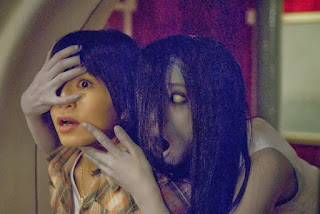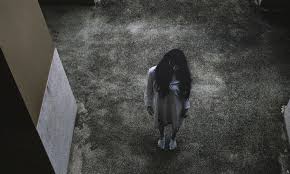Introduction
When it comes to urban legends from around the world, many
of the things that go “bump” in the night end to be male. As Bess Lomax Hawes writes in her essay “La Llorona in Juvenile
Hall”: “The female ghost is certainly not unknown in ghost lore. But contrary
to what seems to be the general impression, most ghost figures are men” (155).
In her study of the folklore of the young girls at Las Palmas School, a detention
center for young women, the primary figures haunting the girls were women; only
a few men, and the shape the female ghosts took revealed much about their anxieties
around being abandoned by their mother, and about growing old. Themes of
motherhood, of infanticide, and of sexuality were rampant among the La Llorona
stories and other female centered ghost stories within the walls of Las Palmas,
themes that tied the horror directly to the gender of the ghost. Male ghostly
figures have a much looser association to their gender than female ghosts do.
The stories that circulated around the three male ghost-figures with Las Palmas
read as follows:
“There is a storm drain outlet on
the Venice side of POP [Pacific Ocean Park, a popular Los Angeles amusement
park], and a long time ago the water didn't hit it; that was before they had
bars over it. There was a man who used to grab little kids and throw them in
there and tear them up.” (Hawes 156).
“There is a man who walks through
graveyards at midnight. He has one black hand which is deformed. If he touches
you, you either die or you get deathly ill. He touched my friend's sister, and
she got real sick” (Hawes 156).
And then the third, Hawes describes as a male ghost who
points to a hidden treasure to aid a woman whose husband is always beating her
because he feels bad for her (156). None of these stories carry any particular
emphasis on gender or gender roles. The actions could be performed, arguably, by
a male or female ghost. However, when it comes to female ghosts there is a
trend where their identity as female becomes particularly important to their legends.
Often they are tied to their incapability to fulfill gender expectations, their
reproductive abilities, their inability to find love, their bad luck in love, their
sexuality, or the desire to obtain beauty.
Colin Dickey calls ghost stories “the dreams (or nightmares)
of a nation…the Freudian slip of whole communities” (Ghostland). Through
ghost stories, it’s possible to see the unrepressed anxieties, fears, and expectations
of a culture. By examining different legends concerning female ghosts and female
centered legends from around the world, it’s possible to see how these different
cultures view women within their society, what kind of expectations are the
most important when it comes to gender performance, and what kind of roles
women are supposed to play, and how severe it is when they fail to play them
correctly. While there are fewer female ghost figures then there are male, they
do appear in each culture, and despite their small differences, there are trends
among them that express universal expectations of gender performance and anxieties
about women. Many cultures feature stories of dead brides-to-be; women passed
on before they were wed and able to carry out wifely duties. Many stories
feature vengeful women who kill to avenge themselves against bad husbands. Many
stories feature deformed women who ask trick questions about their appearance.
Many are mothers who killed their own children, such as La Lorona, and now are
wandering the afterlife in search of their child. Some are suffering the consequence
for acting out of line, for violating the rules assigned to them by being born as
women. Some are representations of the unspoken, repressed hardship women are vulnerable
to. In some, the legends are based off
of real women, who are painted as either non-threatening or monstrous terrors, depending
on how the legend claims they behaved. While many of these stories developed in the
past—some as far back as the Edo period in Japan—they continue to live on in
the modern world, changing shape with the changing times.
Within this gallery, we will look at several female-figures
in ghost legends from different countries; their origins, and how they have
developed, in order to see how gender
plays a role in their hauntings.



Comments
Post a Comment